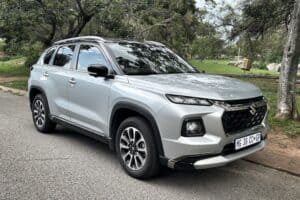Suzuki’s Swift has become best silling passenger car in the country with 1 621 units sold, eclipsing the iconic Volkswagen Polo.

Everybody loves a David and Goliath story and rooting for the “little guy” … so it’s heart-warming, in a way, to celebrate a brand success story in South Africa which few would have predicted just five years ago.
Last month’s new car sales figures produced a surprise in the number one spot – Suzuki’s Swift, with 1 621 units sold, was the best-selling passenger car in the country, eclipsing the iconic Volkswagen Polo.
That was something few motor industry experts saw coming … The success of Suzuki is interesting in a number of aspects.

It parallels that of the biggest car brand in the country, Toyota, in that the smaller Japanese manufacturer started off life in the car sector anyway, as a challenger brand (it was well-known, though, for its race-proven motorcycles).
When Toyota started selling its Toyopet Stout bakkie here in the early ’60s, it was mocked by the many, used to big American bruisers … but built its reputation on quality and reliability.
ALSO READ: New Suzuki Swift big on value and heaps of fun
Suzuki, when it launched here, had a marketing mountain to climb – and how they did it is a classic case of applying the traditional “four Ps” of the marketing mix – product, price, place, and promotion.
In Suzuki’s case, the product was what the market wanted: stylish and economical but extremely reliable transport.
The price was also right: affordable and good value for money, especially when fuel economy became more of an critical purchase consideration.
When it came to place, Suzuki expanded its dealer network and put a lot of effort in after-sales service and customer satisfaction.

Promotion was where the brand’s marketing reflected its product and its philosophy: Not too clever, not too “we do this to win Loeries” … and focused on results.
Campaigns were developed locally (something refreshing in a motor sector which more and more relies on foreign material to punt its wares) and covered a wide range of platforms, from the traditional TV, radio and print ads to social media and online.
“Influencers” were chosen for how they would resonate with the target market. And there was an interesting detail: the Swift has become almost a classless car, appealing to both those moving up in life and those slowing down – and a whole host of different people in between.
Suzuki has also maintained a strong presence in the media on the basis that “earned” media (genuine editorial coverage) is far more effective than “owned” (what the brand pays for, in the form of adverts).
What is really fascinating is that the brand appears to have spent next to nothing launching the new generation of its Jimny 4×4.

Apart from some clever media teasers and strategic reviews, there was no massive ad campaign.
And that’s because people were queuing up to buy the car. And because they were brand evangelists, they talked, wrote, and tweeted about the car … free marketing for Suzuki.
Not many brands can say that they have a car which markets itself.
All in all, Suzuki must be mightily proud of themselves – and I bet even they couldn’t predict one of their products would occupy top spot on the SA sales podium.
Orchids to all involved. And some lessons to be learned for other brands out there.
The real challenge, of course, is that Suzuki is no longer a challenger brand. It has arrived – and with that comes the different challenge of staying there.
- Estate agents are, in most surveys of commercial lowlife, always consistently some near the bottom of the ladder – along with journalists, it must be said.
The profession, if you can call it that, has developed misleading language into a fine art.
Think about the “fixer-upper” in the ad, which turns out to be fit for demolition…
But even by those standards, I had to chuckle about the abuse of both language and marketing principles in a flyer which was deposited in our mailbox recently by the local office of the Fine & Country estate agency group.
“Dear Northcliff Homeowner”, it proclaimed,
“Fine & Country has an exclusive offer for you.”
If it is exclusive (in other words, only for me), why do you not address me by my name?
Why am I just a “homeowner” to you?
And the fact that this is a flyer and dropped in hundreds of other mailboxes makes this exclusive how, exactly?
It emphasises the point of exclusivity by repeating: “Contact us to discuss our exclusive offer to you.”
I was tempted to phone Onno van Damme (the person who signed the flyer – at least that was in ink) and say “Hi, it’s me…”
ALSO READ: Homeowners must brace for interest rate hikes
To which he, or she, would have responded: “Who?”
For using overhyped – and just plain wrong – language, Fine & Country gets an Onion from me.
I would worry about what this level of personal and exclusive says about the rest of your offering.






